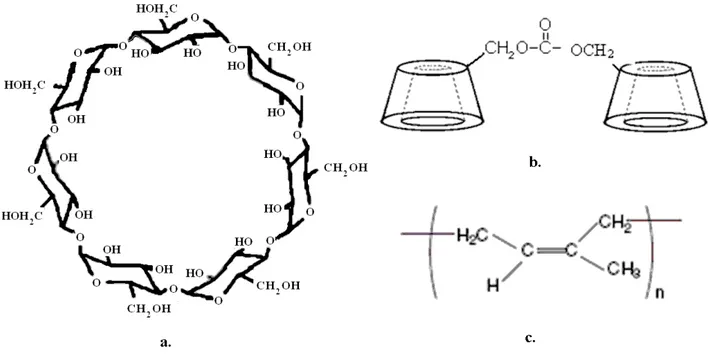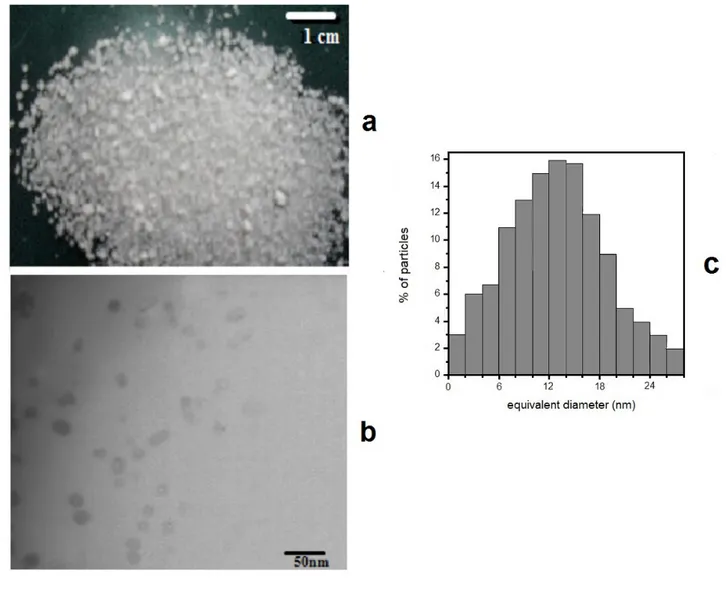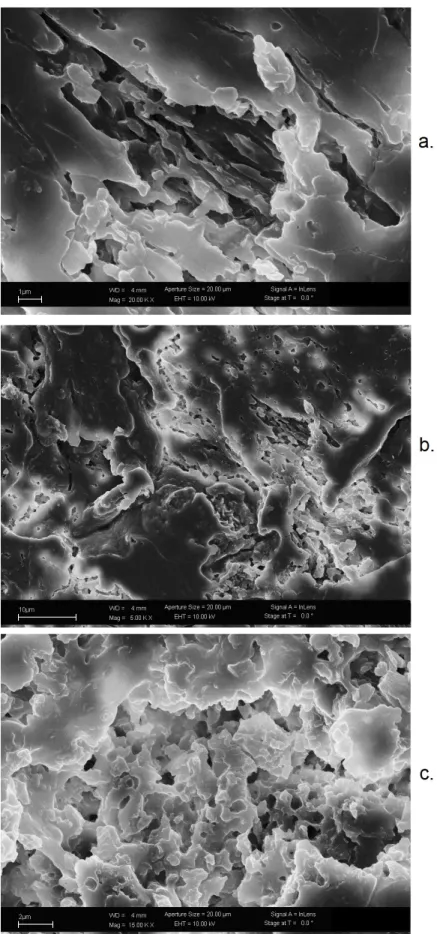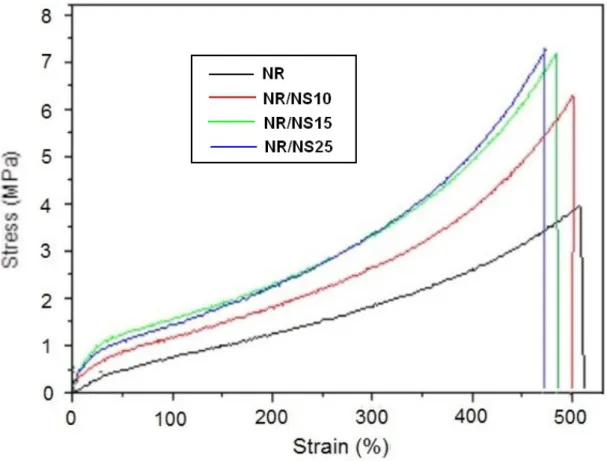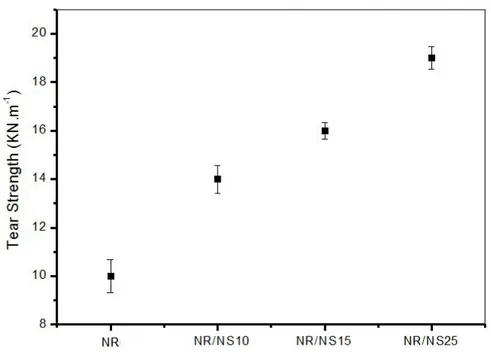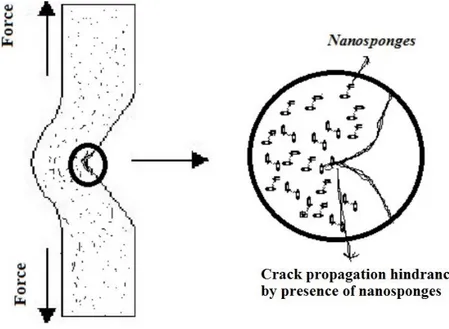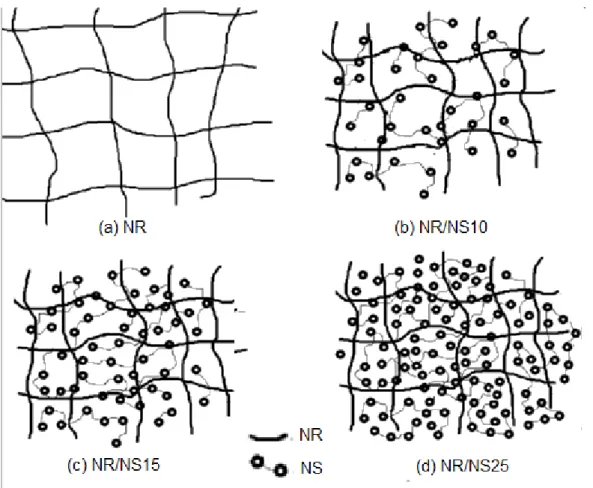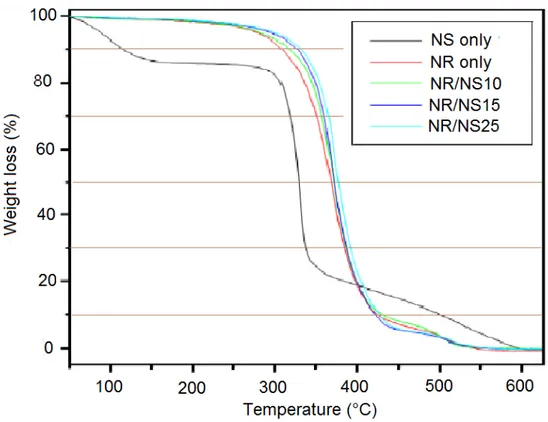-Cyclodextrin Nanosponges (NS) based Natural Rubber latex (NR)
Nanocomposites: Tensile, Thermal and Morphological Characterization
C. P. Sisira Sukumaran 1,2, P.M. Visakh1, C. Santulli3
1 School of Chemical Sciences, Mahatma Gandhi University, Kottayam, P.D. Hill P.O, Kerala, India, 686 560
2Department of Materials Engineering, Defence Institute of Advanced Technology (DU), Pune, India 411025
3* School of Architecture and Design, Università di Camerino, Viale della Rimembranza, 63100
Ascoli Piceno, Italy
* To whom correspondence should be addressed:
Professor Carlo Santulli
School of Architecture and Design Università degli Studi di Camerino
Viale della Rimembranza, 63100 Ascoli Piceno (Italy) E-mail: [email protected]
ABSTRACT
In this work, a bionanocomposite obtained by reinforcing a natural rubber (NR) matrix with different amounts of -cyclodextrin nanosponges (NS) (10, 15 and 25 vol.%) was characterised under the tensile, thermal and morphological point of view. The morphology of the composite has been examined by scanning electron microscopy (SEM) and transmission electron microscope (TEM). These studies indicated the presence of a co-continuous phase morphology and the uniform dispersion of the nanosponges in the NR matrix. Mechanical properties, such as stress-strain behaviour, tensile strength and modulus, elongation at break and tear properties were also measured. Compared to pure NR, NS-NR nanocomposite showed enhanced tensile strength (by around 80% maximum) and modulus (by more than 100% maximum) and tear properties (by around 90% maximum). Effectiveness of nanosponges on enhancing the mechanical properties is attributed by their formation of a three-dimensional network within the NR matrix. This effect was able to slightly increase the thermal stability of the nanocomposites (typically by around 5-10°C) with respect to NR, despite the fact that degradation of pure NS occurs at lower temperatures.
KEYWORDS: -cyclodextrin nanosponges, Natural rubber, Nanocomposites, Mechanical
properties
1.0 INTRODUCTION
Hyper cross-linked cyclodextrin polymers with carbonate bonds having nanostructured three-dimensional network are starch-derived products, which are also referred to as nanosponges (NS) [1]. As this name indicates, the polymer formed is nanoparticulate in nature, in addition NS have tunable polarity and include cavities of nanometric dimensions. Cyclodextrin NS are non-toxic, nano-porous, and insoluble in water and in the most common organic solvents with stability up to above 100°C [2]. They may be used to encapsulate, carry and/or selectively release a great variety
of substances. Different functional groups can also be grafted to the structure, so that for example magnetic properties can be conferred to it [3]. Nanosponges were first prepared from -cyclodextrin by authors as reported in the patent WO 03/085002A1 (F. Trotta, V. Tumiatti“Cross-lynked
polymers based on cyclodextrins for removing polluting agents”) with minor modifications [4].
-cyclodextrins (-CDs) have been the most widely used among all the cyclodextrins [5–6]. These naturally occurring polysaccharides appear attractive due to low cost, high biodegradability and biocompatibility: as a consequence, a possible application for -cyclodextrins (-CDs) is in drug delivery systems [7]. Enescu et al. [8] reported on the morphology, toxicity aspects and outstanding stability (up to ca. 300°C in air) of nanosponges. In conclusion, nanosponges are able to capture, transport and selectively deliver a huge variety of substances because of their tunable polarity and their 3D structure containing nano-cavities, as schematised in Figure 1.
Biopolymer based nanocomposites are a relatively new class of nanomaterials and own a unique place in nanocomposite research owing to their biodegradability, biocompatibility and environmental friendliness [9]. Utilization of bio-based nanoreinforcements was found to improve the water vapor impermeability, mechanical properties and thermal stability without affecting the transparency of the biopolymers to a great extent [10].
Natural rubber (NR) based bionanocomposites with chitin whiskers, cellulose whiskers extracted from Syngonanthus nitens (Capim Dourado), rachis of palm tree and bagasse have been recently reported with promising evidence [11-14]. In this regard, even the introduction of a limited amount of reinforcement can be worth investigation, especially in the view of waste disposal with some added benefits [15].
The objective of the present work is the development of bionanocomposites by the judicious incorporation of the nanosponges into natural rubber latex. The idea is that the nanosize and the resultant high surface area of the particles would generate significant interfacial areas in the composite, hence favouring interaction between filler particles. In particular, morphology, mechanical and thermal properties have been examined. The improvement in mechanical properties
by the addition of nanosponges has been explained with the formation of a three-dimensional network of nanosponges in the rubber matrix.
2.0 EXPERIMENTAL
2.1. Materials
Chemical structure and the molecular shape of cyclodextrins and the proposed structure of -cyclodextrins nanosponges as from [16] are given in Figure 1a and 1b, respectively. It is suggested
that due to the symmetry of -cyclodextrins structure, there would possibly not being a preferential
side for formation of weak chemical interactions, such as Van der Waals, with natural rubber, whose structure is provided by comparison in Figure 1c. The basic characteristics of nanosponges and of
NR latex are reported in Table 1.
Figure 1: (a) Chemical structure of - cyclodextrins
-cyclodextrin nanosponges
Supplier Sea Marconi Technologies, Italy
Source Carbon source
Thermal stability Stable up to 330°C [17]
Natural rubber latex
Supplier Rubber Research Institute, India
Dry rubber content (DRC)% 57.63
Total solid content (TSC)% 62.46
Table 1: Characteristics of -cyclodextrins nanosponges and natural rubber latex
2.2. Preparation of -CD Nanosponges
-CD nanosponges were synthesized following the procedure reported elsewhere [4]. 100 ml of
anhydrous dimethylformamide (DMF, Aldrich, HPLC grade>99.9%) were put in a round bottom flask and 17.42 g of anhydrous -cyclodextrin were added to it for complete dissolution. Then 9.96 g of carbonyldiimidazole (CDI, Aldrich, reagent grade) were added and the solution was allowed to react for 4 hours at 100°C. Once the reaction was over, the transparent block of hyper cross-linked cyclodextrin was ground and an excess of water was added to remove DMF. Finally, residual by-products were removed by Soxhlet extraction with ethanol. The synthetic procedure can also be carried out using ultrasound (US).-CD nanosponges can be classified based on the molar ratio of the cross-linker used in their preparation. For calculation of volume densities, -CD bulk density was measured by the volume of a known weight of powder sample, passed through a sieve into a graduated cylinder: after five measurements, it was assumed to be equal to approximately 0.18±0.1 g/cm³. Natural rubber density is equal to around 0.9 g/cm³.
2.3-CD Nanosponge Suspension
-CD nanosponges were powdered using a mechanical grinder, and then 10 grams of the powder
were washed with acetone three times for better purification and then dried in an oven at 50°C for removing acetone. The -CD nanosponges powder was added to 50 ml of water, obtaining therefore a suspension with 16.67 wt.% nanosponges, followed by ultrasonication for 5 minutes for each sample. Precooling of the bath for 25 minutes was carried out before sonication to reduce heat release: this method was deemed to ensure a homogeneous dispersion of the particles in the
composite.
2.4. Preparation of -CD Nanosponges Reinforced Natural Rubber Nanocomposites
The natural rubber latex was used as matrix and the -CD nanosponges suspension was introduced into the NR latex and stirred for 2 hours, cast in glass plate. The solid nanocomposite films were obtained by evaporating the water by drying in an oven at 40°C. The concentration of nanosponges was varied from 0 to 8.67 wt%, as indicated in Table 2. In practice, in a weight of dry natural rubber equal to 57.63 g, amounts of 2, 3 or 5 g of NS have been introduced, which lead to the different types of samples, as detailed below.
Sample code NS volume content (%) NS weight content (%)
NR 0 0
NR-NS10 ~10 3.47
NR-NS15 ~15 5.21
NR-NS25 ~25 8.67
Table2: Composition of prepared materials 2.5. Characterization
2.5.1. Morphology
The dispersion of nanosponge particles in the matrix has been observed using a Philips CM-100 Transmission Electron Microscope (TEM), which operated at 100 kV, with apertures of 3200 µm for the condenser and 70 µm for the objective, respectively.
Morphology of the nanocomposites was observed using JEOL, JSM-5200 Scanning Electron Microscope (SEM). Films were fractured under liquid nitrogen and sputter-coated with gold. The four different films, NR, NR-NS10, NR-NS15 and NR-NS25 were observed in the SEM at an acceleration voltage of 25kV.
2.5.2. Mechanical Properties
bell-shaped samples. Crescent bell-shaped samples were used for tear measurement according to ASTM D624-00 (2012). The samples for tensile tests were punched from the sheet according to ASTM
Standard D 412-97 a cross-head speed of 500 mm/min with 40 mm intergrip distance. Ten samples per category and per loading procedure were tested at a temperature of 23 (± 2)°C.
2.5.3. Thermal Properties
A thermogravimetric analyzer (Perkin Elmer TGA4000) was used to investigate the thermal stability of pure NR, pure S and different nanocomposite films including different amounts of NS. The scanning range was 0–600°C using a heating rate of 10°C min -1 in nitrogen atmosphere.
3.0 RESULTS AND DISCUSSION
In principle, the obtained results were aimed at verifying an effective combination was achieved in the -CD NS reinforced NR latex nanocomposites, by suitably combining the elastic behaviour of the NR rubber with the high strength and stiffness of the -CD NS. Another expectation is that the uniform dispersion of the high modulus reinforcing phase would act by restricting the molecular mobility of the polymer leading to increased mechanical properties and thermal properties. The possibility to achieve these results is suggested in particular by the fact that, owing to their small diameter, -CD NS are nearly free of internal defects, thereby yielding strength close to their theoretical maximum [18]. In practice, the reinforcing effect of the -CD NS would depend on their ability to form a rigid three-dimensional network, which results from strong interactions such as hydrogen bonds between the -CD NS [19]. This has been proven elsewhere by the use of Fourier transform infrared spectroscopy (FTIR), in that O-H stretching allowed highlighting the role played by primary and secondary -OH groups in the hydrogen bond network of the polymer [20]. In this specific case, the extent of reinforcement offered would obviously depend on a number of factors, including the generation of strong fibre-matrix interface through physical bonding, the aspect ratio and dispersion of the nanosponges in the NR latex matrix. Recent studies e.g., demonstrated that
natural rubber had some potential for the inclusion of crab chitin, whose dimensional variability and amount of defects is considerably higher than it is the case for -CD NS [15].
3.1 Morphology
3.1.1 Morphology of nanosponge particles
Some information about morphology and size distribution of nanosponges can be obtained from Figure 2. In particular, from Figure 2(a) the particles appear white in colour and in the form of a coarse powder; Figure 2(b) depicts the TEM images of the nanosponges, when introduced in the rubber matrix: this clarifies their dimension and also indicates that a sufficiently good, though not very uniform, of these is achieved in the nanocomposite. In Figure 2(c) the size distribution of nanosponges is presented in the form of a histogram with 2 nm bin width: the equivalent diameters are reported, as measured from the average of four measurements on each TEM image. This
indicates that nanosponge particles have equivalent diameters in a range going from 0 to 30 nm with about half of them falling in a narrow range of diameters equal to 13±3 nm: this appears to be in line with what observed e.g., in [21].
Figure 2: (a) Optical microscopy image of the nanosponges; (b) TEM micrograph of nanosponges;
(c) Size distribution curve of nanosponges (equivalent diameter).
3.1.2 Morphology of Rubber Nanocomposites
The morphology of the -CD NS/NR nanocomposites was examined with the assistance of SEM to highlight and understand the dispersion of these nanoparticles in the NR matrix. Figure 3 shows the SEM images of the nanosponge based nanocomposites: here, it was not possible to see any microsized agglomerates or bundles of particles in the cross-section of the nanocomposites. This is indicative of the nanoscaled dispersion of nanosponges in the NR matrix and of the limited amount of differential strain thus achieved in the preparation of nanocomposites. However, all the images show co-continuous phase morphology, hence penetration of a phase in another: the images were taken at different magnifications in order to give the best possible visualisation of this phenomenon
in this case. This indicates the effective particle-particle interaction between nanosponge material in NR matrices and suggests that the nanosponge particles form a network-like morphology in the NR matrix [5].
3.2 Mechanical Properties
Typical stress vs. strain curves for the -CD NS/NR latex nanocomposites are shown in Figure 4. For each measurement, it was observed that the strain was macroscopically homogeneous and uniform along the sample until its break. Stress continuously increases with strain; in addition, the tensile strength of resulting nanocomposites was increased with growing -CD NS content. Presence of -CD NS in the NR matrix offers a significant increase of the modulus and tensile strength. On the other hand, higher rigidity results in lowering of elongation at break. The stress-strain curve of neat NR matrix indicates stress-strain induced crystallization behaviour, since the stress upturn in these curves, characteristic of this behaviour, occurs for lower strain values the higher the amount of NS introduced up to 15 vol.% [22]. In contrast, the curves for NR-NS15 and NR-NS25 are very similar, which suggests no further crystallisation effect is obtained above 15 vol.%. This is confirmed with repeatability in the whole set of samples tested. This clearly suggests that natural rubber retains its basic deformation characteristic even in presence of nanoparticles [23].
Figure 4: Typical stress vs. strain curves for nanosponges/natural rubber nanocomposites
In Table 3, an obvious increase of tensile strength is observed with the addition of nanosponges up to a 15 vol.% content with respect to the values measured on the neat NR matrix. Only a slight variation is revealed though passing from 15 to 25 vol.% of nanosponges. In contrast, the tensile
modulus grows steadily and is more than doubled following the addition of 25 vol. % of nanosponges. The observed increase in the tensile strength and modulus of the nanocomposite films with increase in -CD NS content was attributed to the introduction of a more rigid particle into the rubber matrix, although this might be also combined with the effect of network structure formation of nanosponge particles in the matrix. This network is formed by the hydrogen bonding interaction between the hydroxyl groups in the sponge particles. Such interaction, however, causes the nanocomposite films to be more rigid as the tenor of -CD NS increased. It can be noticed that elongation at break is only slightly decreasing with the growing amount of NS introduced, which appears a positive result in view of the considerable increase of tensile strength obtained.
Samples Tensile strength (MPa) Elongation at break (%) Tensile modulus at 100% elongation (MPa) NR 4.19±0.39 505±4.23 0.95±0.011 NR/NS10 6.52±0.49 500±3.56 1.49±0.01 NR/NS15 7.41±0.48 499±5.34 1.6±0.015 NR/NS25 7.48±0.36 471±7.43 1.97±0.018
Table 3: Tensile properties of neat NR latex and their nanocomposites
As regards tear resistance, in Figure 5a it appears that the tear strength for neat NR is 10 kN*m-1, whereas in the resulting nanocomposites, the values increase up to 19 kN*m-1 for NR/NS25 nanocomposites samples. The increase in tear strength of the nanocomposites films with higher -CD NS content could be due to the uniform dispersion of -CD NS and the favourable interaction between NR latex and -CD NS. This proved true in some rubber matrix nanocomposites (see e.g., [24]). An explanation of this result can be given by the mechanism proposed in Figure 5b, where tear front is hindered by the presence of nanosponges.
Figure 5b: Proposed tear mechanism
The very good improvement in the mechanical properties of natural rubber owed to the addition of nanosponge particles can be explained by a schematic model given in Figure 6. In fact the nanosponge particles are likely to form an obvious three dimensional network-like structure in the natural rubber matrix, which immobilizes the flexible natural rubber molecules. This network can be considered responsible for the evident improvement of the mechanical properties by the addition of nanosponge particles. The scheme is built according to the progressively increasing volume and to an average degree of particle dispersion.
Figure 6: Schematic representation of neat NR and their nanocomposites
3.3. Thermal Properties of Nanocomposite Films
Thermogravimetry (TGA) curve of pure NS, neat NR and their nanocomposites are shown in Figure 7 (a). Neat NS showed initial weight loss at about 60–80°C, which is a likely result of the loss of moisture upon heating, with major degradation occurring between 300 and 350°C. In contrast, thermogravimetric curves of NR and of NR/NS nanocomposites indicated a quite repeatable behaviour, with limited differences. To better highlight these results, derivative TGA curves are also reported in Figure 7 (b) for pure NR and the nanocomposites only in the most significant interval i.e., between 150 and 550°C. In this case, it is obvious that pure NR sheet exhibited a major degradation peak starting at 275°C and centred around 350°C, which appears as a common finding in literature [25]. In contrast, NR-NS nanocomposites show two- or even three decomposition peaks, which are likely to be related to the evaporation of structural water, then to rapid melting/decomposition of the material and finally to carbonisation and incineration [26]. Table 4
shows the degradation temperature at different percentage of weight losses for nanocomposites. It is found that the thermal stabilization increases with growing nanosponge content and a similar trend is observed for maximum decomposition temperature, which indicates a higher thermal stability for nanocomposites increased with increasing NS content, which could be explained by the uniform distribution of NS in NR matrix and an effective polymer/filler interaction.
Figure 7b: DTG curves of NS, neat NR and their nanocomposites
Samples Degradation temperature (°C) at different percentage
of weight losses Max. decomposition temperature rate T10% T30% T50% T70% T90% (%/°C) NR 281 356 362 379 474 0.9 NS 145 332 341 348 497 0.79 NR/NS10 299 359 366 373 469 1.01 NR/NS 15 296 361 369 381 486 0.92 NR/NS25 292 362 375 382 473 0.88
Table 4: Degradation temperature at different weight loss of neat NR and NR/NS nanocomposites
4.0 CONCLUSIONS
cyclodextrin nanosponges (-CD NS) were incorporated into a natural rubber latex (NR) matrix
by the water evaporation method up to a maximum volume content of 25% NS. Various mechanical properties, such as tensile strength, tear strength, tensile modulus and elongation at break were measured. As a whole, the results lead to the conclusion that the -CD NS content plays a major
role in the properties of final composites developed. Young's modulus steadily grows with the amount of NS in the nanocomposites, reaching finally a value more than double that of neat rubber and considerable improvement of tear strength is also measured for NR/NS nanocomposites over the pure matrix, which is attributed to a hindrance effect to crack propagation by NS particles. In contrast, the tensile strength of nanocomposites steadily grows for nanosponges contents up to 15 vol.%, levelling up at 25 vol.%, where a marked increase of rigidity is also observed, resulting in a considerably lower elongation at break.
The reinforcing effect of the -CD NS strongly depend on their ability to form a rigid three-dimensional network, resulting from strong interactions between the -CD NS. If this is the case, the nanofibres can also be used to reinforce polymers in order to improve or modify certain mechanical properties of the host matrix for the specific applications
.
However, it is noteworthy that with larger nanosponge contents orientation might be lost in the nanocomposite, which may suggest that a technical limit may be present to the introduction of larger amounts of nanosponges, whenever an excessive rigidity is unlikely to be desirable. Once this problem is solved, it is possible to use these materials as adapted fillers for rubber with some reinforcing effect, whenever needed, such as for example as a replacement for carbon black.Acknowledgments
The authors gratefully acknowledge Sea Marconi Technologies, Italy, for supplying the
nanosponges and Rubber Research Institute, Kerala, India for supplying NR latex. References
[1] Szejtli J, Introduction and general overview of cyclodextrin chemistry, Chemical Reviews 98 (5), p.1743-1754 (1998).
[2] Selvamuthukumar S, Anandam S, Krishnamoorthy K, Rajappan M, Nanosponges: A Novel Class of Drug Delivery System – Review, Journal of Pharmacy & Pharmaceutical Sciences 15 (1), p. 103-111 (2012).
[3] Banerjee SS, Chen DH, Magnetic nanoparticles grafted with cyclodextrin for hydrophobic drug delivery, Chemistry of Materials 19 (25), p. 6345–6349 (2007).
[4] Trotta F, Tumiatti W, Cross-linked polymers based on cyclodextrins for removing polluting agents. World patent number WO 03/ 085002 (2003)
[5] Rekharsky MV, Inove Y, Complexation thermodynamics of cyclodextrins, Chemical Reviews 98
(5), p. 1875–1918 (1998).
[6] Connors KA, The stability of cyclodextrin complexes in solution, Chemical Reviews 97 (5), p. 1325–1358 (1997).
[7] Cavalli R, Trotta. F, Tumiatti.W. Cyclodextrin-based nanosponges for drug delivery, Journal of
Inclusion Phenomena and Macrocyclic Chemistry 56 (1-2), 209-213 (2006).
[8] Enescu D, Alongi J, Frache A. Evaluation of nonconventional additives as fire retardants on polyamide 6,6: Phosphorus-based master batch, -zirconium dihydrogen phosphate, and -cyclodextrin based nanosponges. Journal of Applied Polymer Science 123 (6), p. 3545-3555 (2011). [9] Oksman K, Mathew AP, Bondeson D, Kvien I, Manufacturing process of cellulose whiskers/polylactic acid nanocomposites, Composites Science and Technology 66 (15), p. 2776-2784 (2006).
[10] Gopalan Nair K, Dufresne A, Crab shell chitin whisker reinforced natural rubber nanocomposites. 1. Processing and swelling behavior, Biomacromolecules 4 (3), p. 657-665 (2003). [11] Gopalan NK, Dufresne A, Crab shell chitin whisker reinforced natural rubber nanocomposites. 2. Mechanical behavior, Journal of Biomacromolecules 4 (3), p. 666–674 (2003).
[12] Siqueira GH, Abdillahi JB, Dufresne A, High reinforcing capability cellulose nanocrystals extracted from Syngonanthus nitens (Capim Dourado), Journal of Cellulose 17 (2), p. 289-298 (2010).
[13] Bendahou A, Habibi Y, Kaddami H, Dufresne A, Isolation and structural characterization of hemicelluloses from palm of Phoenix dactylifera L., Journal of Biobased Mater and Bioenergy 3 (1), p. 81–90 (2009).
and biodegradability properties of bagasse cellulose whiskers reinforced natural rubber nanocomposites Industrial Crops and Products 32 (3), p. 627-633 (2010).
[15] Santulli C, Puglia D, Rallini M, Visakh PM, Kenny JM, Thomas M, Natural rubber composites filled with a low volume of crab chitin whiskers: Mechanical and thermal characterization, Malaysian Polymer Journal 9 (1), p. 18-23 (2014).
[16] Swaminathan S, Pastero L, Serpe L, Trotta F, Vavia P, Aquilano D, Trotta M, Zara GP, Cavalli R, Cyclodextrin-based nanosponges encapsulating camptothecin: Physicochemical characterization, stability and cytotoxicity, European Journal of Pharmaceutics and Biopharmaceutics 74 (2), p. 193–201 (2010).
[17] Shen Y-L, Yang S-H, Wu L-M, Ma X-Y, Study on structure and characterization of inclusion complex of gossypol/beta cyclodextrin, Spectrochimica Acta Part A 61 1025–1028 (2005).
[18] van de Manakker F, Vermonden T, van Nostrum CF, Hennink WE, Cyclodextrin-based polymeric materials: synthesis, properties, and pharmaceutical/biomedical applications, Biomacromolecules 10 (12), p. 3157–3175 (2009).
[19] Martin Del Valle EM, Cyclodextrins and their uses: a review, Process Biochemistry 39 (9), p. 1033–1046 (2004).
[20] Castiglione F, Crupi V, Majolino D, Mele A, Panzeri W, Rossi B, Trotta F, Venuti V, Vibrational dynamics and hydrogen bond properties of b-CD nanosponges: an FTIR-ATR, Raman and solid-state NMR spectroscopic study, Journal of Inclusion Phenomena and Macrocyclic Chemistry 75 (3-4), p. 247-254 (2013).
[21] Alongi J, Poskovic M, Frache A, Trotta F, Novel flame retardants containing cyclodextrin nanosponges and phosphorus compounds to enhance EVA combustion properties, Polymer
Degradation and Stability 95 (10), p. 2093-2100 (2010).
[22] Poompradub S, Tosaka M, Kohjiya S, Ikeda Y, Toki S, Sics I, Hsiao BS, Mechanism of strain-induced crystallization in filled and unfilled natural rubber vulcanizates, Journal of Applied Physics
97, 103529 (2005).
Natural Rubber, Macromolecular Symposia 233 (1), p. 132-136 (2006).
[24] Rooj S, Das A, Thakur V, Mahaling RN, Bhowmick AK, Heinrich G, Preparation and properties of natural nanocomposites based on natural rubber and naturally occurring halloysite nanotubes, Materials and Design 31 (4), p. 2151-2156 (2010).
[25] Pojanavaraphan T, Magaraphan R, Prevulcanized natural rubber latex/clay aerogel nanocomposites, European Polymer Journal 44 (7), p. 1968-1977 (2008).
[26] Xu P, Song LX, Wang HM, Study on thermal decomposition behavior of survived -β cyclodextrin in its inclusion complex of clove oil by nonisothermal thermogravimetry and gas chromatography coupled to time-of-flight mass spectrometry analyses, Thermochimica Acta 469 (1–2), p. 36-42 (2008).
